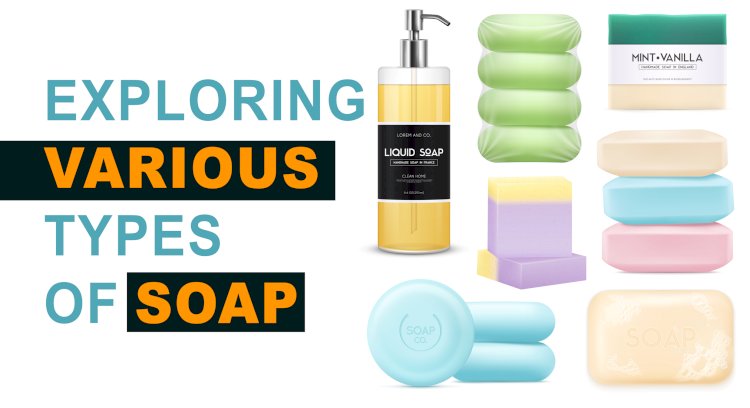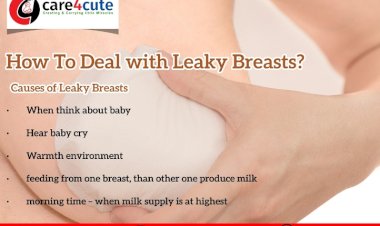How Soap is Formed: Exploring Various Types of Soap
Learn about the different types of soap and their formation. Also, find out about the ingredients used in making each type of soap, and how they affect our skin.

Introduction
Soap, a vital part of our daily hygiene routine, has been used for centuries to cleanse and nourish our skin. Have you ever wondered how soap is formed? In this article, we will delve into the fascinating process of soap formation and explore the different types of soap available in the market. Additionally, we will understand how baby soap differs from ordinary soap, ensuring the gentle care and protection of delicate baby skin.
The Science of Soap Formation
The formation of soap is a fascinating process rooted in science. Soap is created through a chemical reaction known as saponification. This reaction involves the combination of fats or oils with an alkaline substance, such as sodium hydroxide or potassium hydroxide.
When fats or oils, which are composed of molecules called triglycerides, come into contact with the alkaline substance, a hydrolysis reaction takes place. This reaction breaks down the triglycerides into their individual components: fatty acids and glycerol.
The alkaline substance, also known as a base, plays a crucial role in this process. It reacts with the fatty acids to form a salt called a soap. The soap molecules have a unique structure, with a polar end that is attracted to water (hydrophilic) and a nonpolar end that repels water (hydrophobic).
This dual nature of soap allows it to interact with both water and oil. When soap is used during washing, the hydrophobic ends attach themselves to the oil and dirt on the skin, while the hydrophilic ends are attracted to water molecules. As a result, soap molecules surround and encapsulate the oil and dirt, forming structures called micelles.
When the soapy water is rinsed off, the micelles are washed away, carrying the trapped oil and dirt particles along with them. This is how soap effectively cleanses the skin by removing impurities.
It's important to note that the specific properties of soap, such as its cleansing ability and lathering action, can be influenced by the types of fats or oils used and the specific alkaline substance employed in the saponification process. Additionally, other ingredients like fragrances, colors, and moisturizers can be added to enhance the soap's sensory appeal and skincare benefits.
Understanding the science behind soap formation allows us to appreciate the role of chemistry in our everyday lives. So the next time you use soap, remember the chemical reactions at play that help keep you clean and refreshed.
Ingredients Used in Soap Making
Soap making involves a combination of fats or oils, water, and an alkaline substance. Different oils and fats, such as coconut oil, olive oil, or palm oil, contribute to the soap's properties, including its cleansing and moisturizing abilities. Additionally, ingredients like botanical extracts, essential oils, and colorants can be added to enhance the soap's fragrance, appearance, and benefits.
Cold Process Soap Making
Cold process soap making is a popular method that involves mixing oils or fats with a lye solution. This mixture is then left to undergo saponification over a period of several weeks. The resulting soap bars are gentle and moisturizing, as the natural glycerin is retained during the process.
Hot Process Soap Making
Hot process soap making involves heating the mixture of oils or fats and lye. This accelerates the saponification process, reducing the curing time required. The soap produced through this method is ready to use relatively quickly and has a rustic appearance.
Glycerin Soap: A Natural and Moisturizing Option
Glycerin soap is known for its moisturizing properties. It contains glycerin, a humectant that attracts and retains moisture on the skin. Glycerin soap is gentle, making it suitable for individuals with sensitive skin. It helps maintain the skin's hydration levels, leaving it soft and supple.
Antibacterial and Medicated Soaps
Antibacterial and medicated soaps are formulated to combat bacteria and prevent infections. They often contain active ingredients like triclosan or benzoyl peroxide, which help eliminate harmful microbes. These soaps are commonly used in healthcare settings or for specific skin conditions requiring extra protection.
Transparent Soap: A Unique and Elegant Choice
Transparent soap is visually appealing and often contains ingredients like glycerin and alcohol, which give it a translucent appearance. It can be enriched with botanical extracts, exfoliants, or moisturizers. Transparent soaps provide a luxurious bathing experience while effectively cleansing the skin.
Organic and Natural Soaps: Embracing Nature's Goodness
Organic and natural soaps are crafted using organic oils, plant-based ingredients, and natural colorants. They are free from synthetic fragrances, preservatives, and harsh chemicals, making them gentle on the skin and environmentally friendly. These soaps offer a wholesome and sustainable bathing experience.
Handmade Soap: Crafted with Love and Care
Handmade soaps are created by artisans who carefully blend oils, butter, and other ingredients to produce unique and high-quality products. Handcrafted soaps can be customized with various scents, textures, and designs, making them a delight for the senses.
Specialty Soaps: Catering to Specific Needs
Specialty soaps cater to specific skin concerns or preferences. They can include acne-fighting soaps, moisturizing soaps for dry skin, exfoliating soaps, or even soothing and calming options for sensitive skin. These specialized soaps address individual needs, providing targeted benefits.
Bar Soap:
Bar soap is a classic and widely used form of soap. It is solid and typically comes in rectangular or oval shapes. Bar soaps can be formulated for different skin types and purposes, such as moisturizing, exfoliating, or sensitive skin.
Liquid Soap:
Liquid soap is a convenient option that comes in bottles with a pump or dispenser. It is often used for handwashing, but there are also liquid soaps designed for body and face cleansing. Liquid soaps offer ease of use and are available in various scents and formulations.
Choosing the Right Soap for Your Needs:
When selecting a soap, it's essential to consider your specific skin type, preferences, and any particular concerns you may have. Factors such as fragrance, ingredients, and formulation should be taken into account to find a soap that suits your needs and promotes healthy skin.
Conclusion
Soap plays a vital role in maintaining cleanliness and promoting healthy skin. Understanding the process of soap formation and exploring the various types available empowers us to make informed choices. When it comes to baby soap, opting for gentle and specialized formulations ensures the best care for our little ones' delicate skin.







































Comments (0)